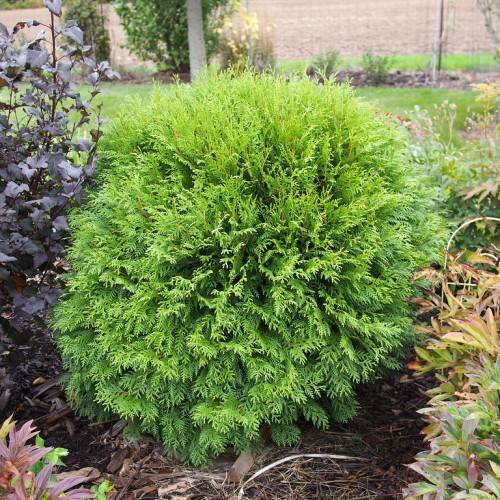
American arborvitae
Thuja occidentalis 'Klmeighteen' PATRIOT
Cycle:
Perennial
Watering:
Minimum
Hardiness Zone:
2 - 7
Flowers:
Flowers In Spring
Sun:
Full sun, Part sun/part shade
Soil:
Sandy Loamy Clay Rocky
Cones:
Yes
Leaf:
Yes
Growth Rate:
Moderate
Maintenance:
Low
Care Level:
Moderate
watering
American arborvitae should be watered once every week or two to ensure optimal growth. Each watering should be deep and thorough, soaking the soil around the roots of the plant in order to encourage the roots to grow deep and promote healthy growth. During particularly hot or dry times, you can increase the watering to twice weekly. If the soil around the plant becomes soggy or waterlogged, reduce the frequency of watering.
sunlight
American arborvitae (Thuja occidentalis 'Klmeighteen' PATRIOT) will do best when planted in full sun, typically receiving at least 6 hours of direct sunlight per day. If planted in an area where only partial sun is available, it will still grow but not as vigorously. To ensure the best performance, it is important to find a spot with bright and consistent sunlight.
pruning
Pruning American arborvitae is best done in early spring, just before the new growth comes in. When pruning, make sure to use sharp pruners or shears, and cut at an angle just above a set of leaves. Start by removing any dead or diseased branches, as well as any that are crossing or rubbing against each other. You can also remove any branches that spoil the overall shape or form of the plant. Make sure to cut all the way back to the trunk or main branch, as stubs can encourage dieback or disease. While pruning back some of the branches will reduce the overall size of the plant, remember that the goal is to achieve a balanced, symmetrical shape. When pruning American arborvitae, don’t remove more than 1/3 of the branches in any one season. Otherwise, the plant may become weakened or overly stressed. Pruning should be done with care and caution, as the foliage of this plant is especially fragile. Also, be sure to use a form of protection like gloves when pruning, as the foliage can cause skin irritation in some people.
